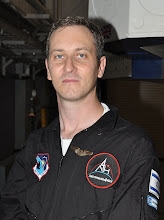What if instead of a campground I were somewhere in deep space and instead of Amnon Govrin my name was Jean-Luc Piccard? Then I'd be on the Starship Enterprise, of course, where a replicator could in seconds create nearly anything, from a cup of tea (cup included) or, in my case, pliers.
But I digress. Back to 2011. In 2011 and the past few decades we've been circling the Earth, not dissimilar from my camping trip, where we're always at a realistic driving distance from the comforts of a Walmart, Costco or a Progress. In low-Earth-orbit astronauts are always at a short distance away for sending supplies (even if some of those fall into the sea like the last launch on August 24). Of course, space agencies are also better prepared for missions and plan for contingencies more than the average camping family (to be fair, space missions cost a tad more, too). Deep-space missions will be a whole different endeavor. The inevitable next giant leap in human space exploration will be Mars, and that's only a nearby planet, not a different solar system, not even at the outer rim of ours.
In the year 2011 we don't have the Star Trek replicator, which can reconstruct items at their molecular level. We do have several devices that achieve similar feats, namely rearranging small generic particles into something else. You'd be surprised how much closer we are to such a magical device than some 24 years ago, when Piccard assertively announced "Tea, Earl-Grey, Hot!" for the first time.
A Google search for "Star Trek Replicator" will reveal quite a few articles on the subject, related developments and products. The ZCorp ZPrinter (one of the commercialized applications) is essentially an ink-jet printer, with paper replaced by special powder and ink augmented by a binding agent. It can print, layer by layer, tools and machines that work right out of the box (sorry, no tea at this point). The idea isn't entirely new, but what's fascinating about the ZPrinter is the ability to create usable working strong-enough tools such as the wrench in the following video. Most impressive to me is the fact the wrench not only works on the mechanical level but can actually strengthen a real nut on a real bolt.
ZCorp 3D printers weigh 165-345 kg (365-750 lbs) sans powder, hardly worth hauling up to space just for a wrench. They also rely on gravity to print. But the development of the materials and layering architecture is a big step forward towards a device that may be useful one day to take on a trip to Mars and beyond with a library of files describing tools and spare parts instead of taking those tools and spare parts, especially if the material can be extracted on the destination.
3D printing is also applicable to other materials and industries. For example, you can print using stainless steel and copper if you also have a 2000 degree Fahrenheit oven (or can afford packing one for a space mission). Or, if you forget your flute at home, just print one.
So next time you go on a long trip, perhaps to the mountains, desert or Mars, you may hear your spouse yelling from across the house "Honey, don't forget the replicator!"

 Space Shuttle Launch Poll Results
Space Shuttle Launch Poll Results













3 comments:
Nice to see how far this tech has come.
I especially like the scanning part.
It seemed like they were using lasers, with no x-ray like radiation, so I fail to see how they could have gotten the moving parts correctly.
Care to explain?
I agree, the scanning part is definitely amazing. My guess is that they had a step in the middle that cut out the pieces somehow or maybe they scanned it multiple times and the software recognizes parts that moved between scans.
Getting closer to using 3D printing in space missions - a company called Made In Space tested 3D printing last July on micro-gravity flights.
See details here: http://madeinspace.us/3d-printers-tested-in-zero-gravity
Post a Comment